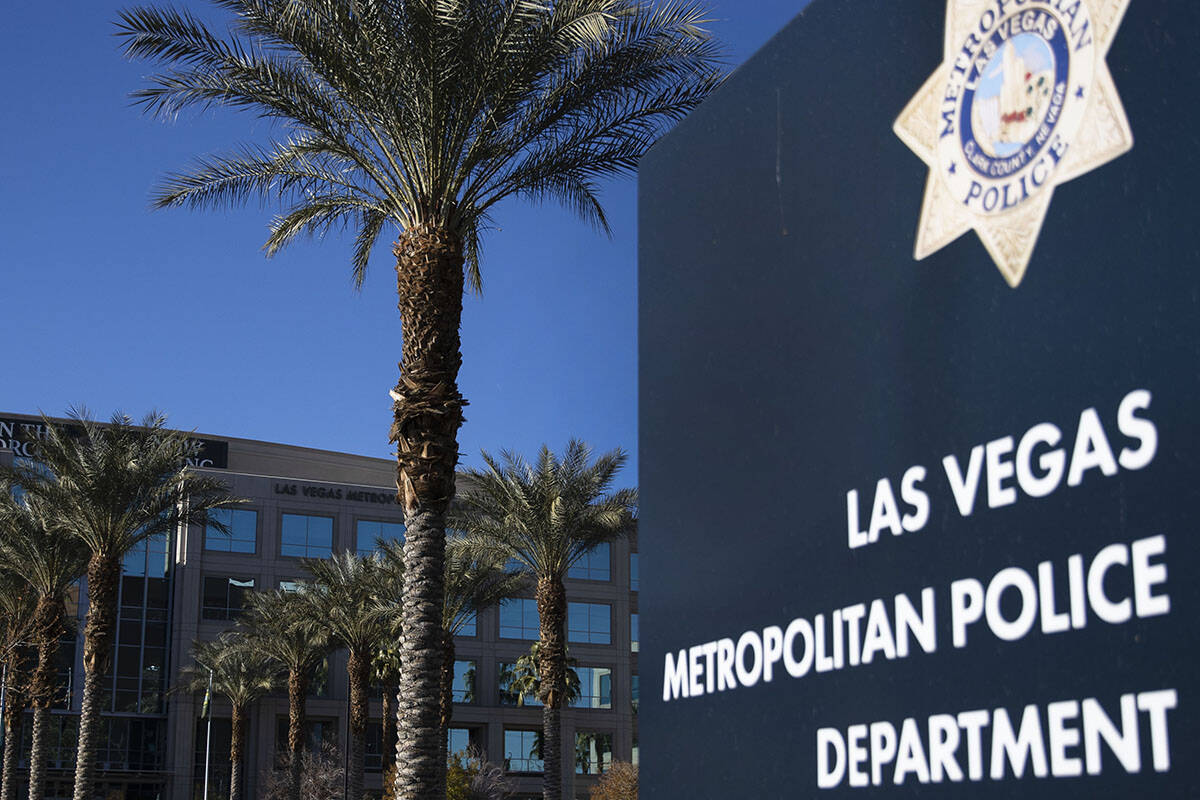Simulated officer-involved shooting surprises journalists
In front of startled members of the local news media, a blue pickup, pursued by a pair of siren-blaring police cruisers, screeched to a stop, and the driver exited and pointed a handgun at the officers who commanded him to drop the weapon.
The gunman and officers exchanged a loud flurry of shots, the gunman fell to the ground, the officers, still pointing their firearms, walked together to the fallen suspect, turned him over and handcuffed him.
That was on the driver’s side of the pickup. On the passenger’s side, media members there were unable to see the guns firing but did see a second suspect, who was not armed, drop out of the door and fall onto the ground ready to be cuffed.
It all took place in a matter of seconds, which was partially the point of the surprise simulated-officer-involved shooting outside the Metropolitan Police Department’s Joseph Lombardo Building, way out on far East Carey Avenue at the foot of Sunrise Mountain.
Police public information officers took the media types out to experience the realistic, compelling live story line — with blank shots and cops as role players — under the guise of a “tour” of the sprawling, 50,000-square-foot Lombardo training facility.
“So one of the things that you guys just witnessed is one of the trainings, this is an officer-involved shooting, you guys are all witnesses now,” Metro spokesman Officer Aden OcampoGomez told the group.
“Part of it was to just kind of get you guys out there, distracted a little bit,” OcampoGomez explained to the 14 print and TV journalists. “So that way the scenario can kind of occur because sometimes that’s how quick an officer-involved shooting can happen.”
After the officer-involved-shooting simulation, OcampoGomez and other PIOs in a classroom at the facility asked the media representatives to take a short test on what each of them believed happened, down to the make of the pickup and how many shots police fired.
Perhaps predictably, the answers not only varied greatly, but few of the test takers correctly identified key aspects of the “shooting,” the things police would ask them about the shooting, such as the actual suspect truck (a blue Chevrolet pickup), which included answers such as a dark pickup truck, a Dodge truck, a blue Ford, a black truck, an F-150 and a black SUV.
“So these are all the answers that were provided of one single vehicle that all you guys witnessed,” he said.
No one recalled accurately how many shots police fired — one officer fired six times, the other three — and most thought the suspect’s gun was a semi-automatic when it was actually a revolver.
“What we wanted to do is to give you just a little preview of how different perspectives can occur even though you guys all witnessed the same thing,” OcampoGomez said.
If that had been a real officer shooting, Metro would assign its Force Investigation Team to talk to each witness and take all of their information and review the officers’ body worn camera footage “to see exactly what took place,” he said.
Sgt. Michele Iacullo of the FIT team said they compile information, including all the available body camera video, on officer-involved shootings and shoot for a time frame of 72 hours to reveal the initial details to the news media and the public.
But preparing the required FIT report on an officer-involved shooting for the district attorney’s office takes up to 60 days, she said.
Another layer of scrutiny in officer shootings is the Office of Internal Oversight, created by Metro in 2012, which examines the FIT report on each shooting, prepares its own summary of tactical decisions by police officers, and meets as needed with community organizations such as the ACLU and NAACP to listen to their concerns, the group’s leader, Sgt. Patrick Hughes, said.
Contact Jeff Burbank at jburbank@reviewjournal.com or 702-383-0382. Follow him @JeffBurbank2 on Twitter.


















